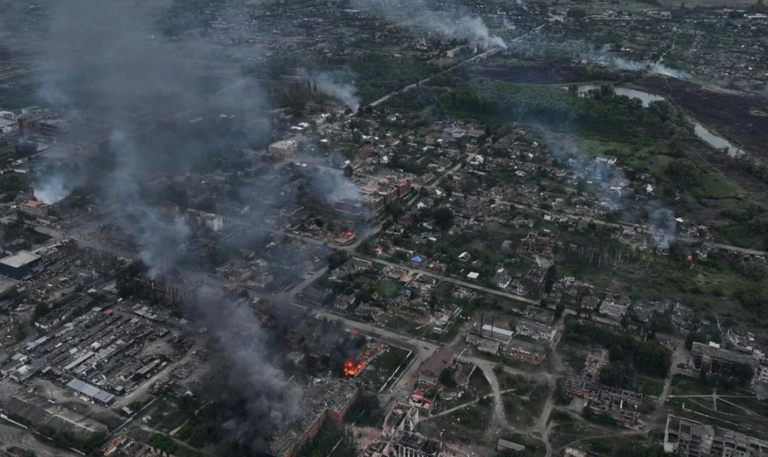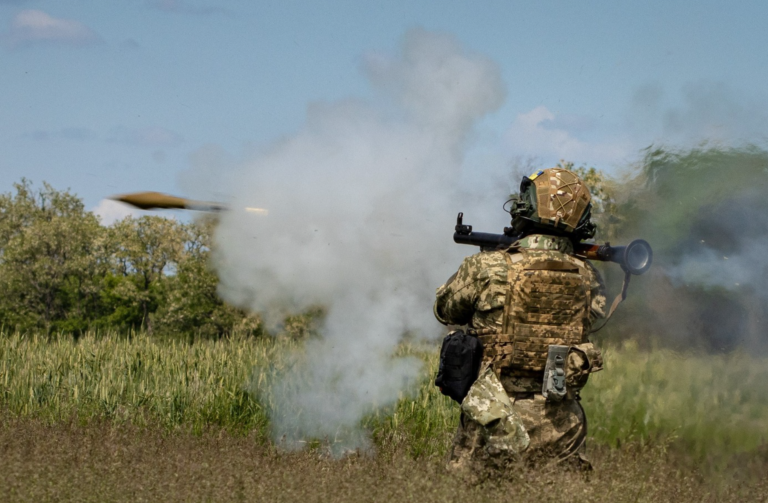During that time, the deminers checked 71 km / 45 miles of power lines, restoring electricity supply to almost a thousand consumers.
Source: Department of Civil Protection of the Kharkiv Regional Military Administration
On 1-7 June, deminers cleared 282 hectares / 696 acres of land in Kharkiv region. During the week 1954 unexploded ordnance was destroyed, and bomb squads were called out 419 times.
“The sappers demined 71 hectares of farmland and inspected 11.4 km of road sections, 470 m of gas pipelines, 1.5 km of water pipelines, 3.4 km of railway tracks and 27 facilities,” the statement said.
In addition, almost 71 kilometers / 45 miles of power lines have been inspected, enabling utilities to connect 997 families to the grid.
Since the beginning of the de-occupation of the communities, 12,000 kilometers / 7,456 miles of power lines have needed to be cleared of mines, and 17% of their total number has been checked. Power lines and other critical infrastructure facilities are the first to be demined.
- On 7 June, power engineers partially restored the electricity supply to Vesele village of the Lyptsi community. The settlement had been without electricity for 15 months.
- And on 5 June, electricity was partially restored at Verkhniy Saltiv, Chuhuiv district. This settlement was under occupation and active hostilities were taking place there. Russian invaders destroyed about 80% of the power grid at Verkhniy Saltiv.
According to Oleh Syniehubov, the total area of mined or suspected mined territory in Kharkiv Oblast is about 570,000 hectares / 1,408,500,67 acres, with 447 settlements. This means that sappers cleared 0.05% of the total area during the week. If we assume that explosive experts will continue to work at the same pace, it will take approximately 40 years to clear the Kharkiv region of mines.
Mine danger
Kharkiv Oblast is one of the most contaminated with explosive devices, with Kupiansk, Vovchansk and Izium forestries being the most affected.
PFM-1 is one of the most widespread anti-personnel mines that Russians leave in the occupied territories in forests, around roads, trails, parks, and even in the yards of private houses.
This land mine is a high-explosive anti-personnel landmine produced by the Soviet Union and Russia. It has several names, including the Green Parrot and the Butterfly Mine. These mines can be scattered from helicopters, combat aircrafts, and mortars. They glide to the ground without detonating and only explode upon contact at a later time.

According to the International Committee of the Red Cross (ICRC), the international community adopted the 1997 Anti-Personnel Mine Ban Convention prohibiting the use, production, stockpiling and transferring these weapons and requiring action to prevent and address their long-lasting effects.
See also
- Car exploded on unidentified mine in Kharkiv Oblast: one dead. A 37-year-old woman died on the spot. Two girls aged 12 and 15 and a 12-year-old boy were seriously injured. All the victims were hospitalized, and doctors were fighting for their lives.
- War crimes in Kharkiv Oblast: 37 Russian servicemen notified of suspicion. Crimes committed by the military personnel of the aggressor state and representatives of Russian private military companies must not go unpunished.




